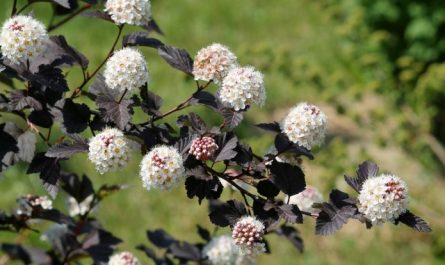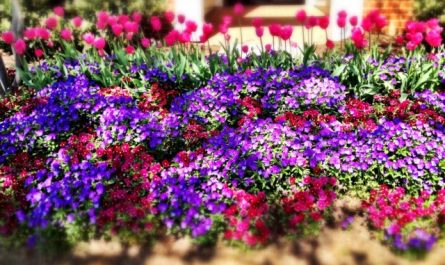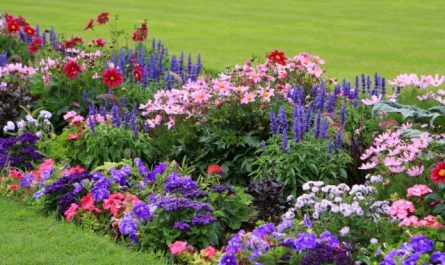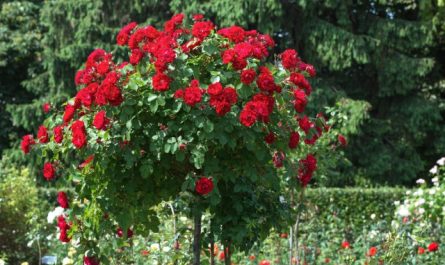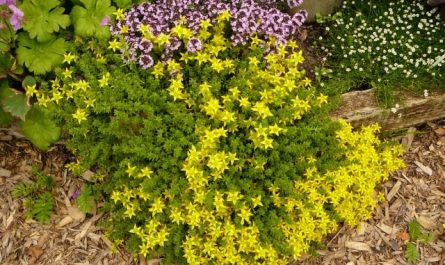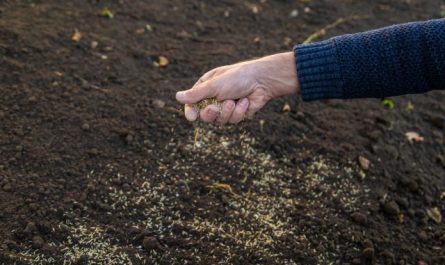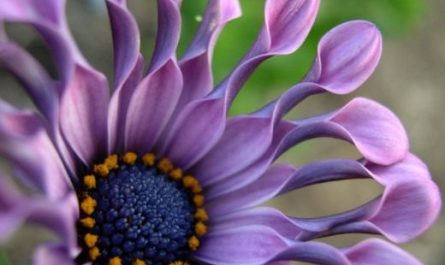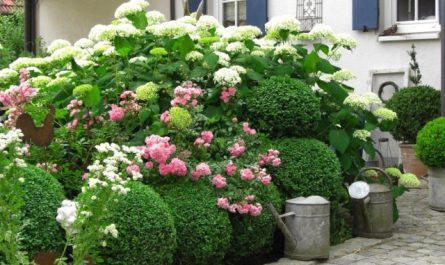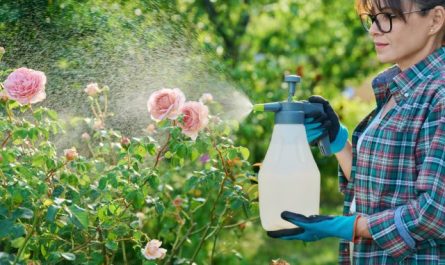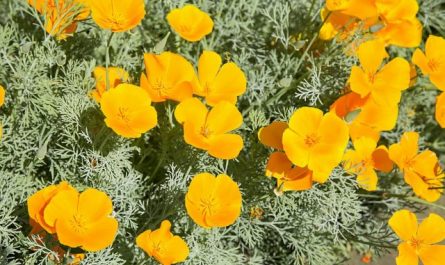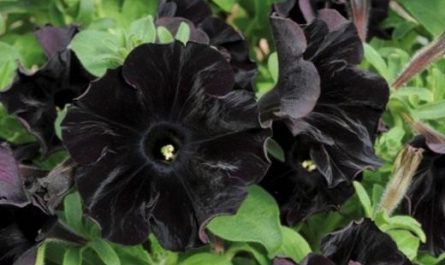Fragrant, stunningly lush, with rich purple hues, heliotrope is one of the most special representatives of the Borage family. Emerald leaves and purple inflorescences, it would seem, should give heliotrope a somewhat nostalgic charm. But this unusual plant looks catchy, bright and very modern. On the terrace, balcony or in the garden, heliotrope will easily become a new favorite. However, only if you are ready to provide it with regular care and sufficient attention. Otherwise, you will not be able to enjoy the beauty of a truly lush flowering late-season accent.

Description of the plant
Almost forgotten in the last century, heliotrope is becoming fashionable again. Its competitors are still easier to grow from seeds, but now heliotrope has this opportunity too. After all, thanks to the emergence of new varieties that manage to bloom in the year of sowing, the time when heliotrope could only be grown from cuttings has passed.
Heliotrope (heliotropium) is a large genus of spectacularly flowering, non-winter-hardy subshrubs and herbaceous plants from among the sun-worshippers (it got its name from the ancient Greek “sun” and “to rotate”). In our gardens, heliotropes are represented by spectacular hybrid varieties of abundantly flowering heliotrope arborescens (Heliotropium arborescens), synonym – Peruvian heliotrope (Heliotropium peruvianum).
In regions with harsh winters, heliotropes are often grown as annual plants, but only when kept indoors can they be grown as perennials (garden or strictly indoor).
Densely branched subshrubs with straight shoots up to 40-60 cm high for regular varieties and up to 25-30 cm for dwarf varieties surprise with the compactness and beauty of greenery. The obovate leaves, sitting on short petioles, are elegant, large, up to 10 cm long, with a wrinkled surface, an elegant pattern of veins and a special metallic-velvety texture. The colors of greenery in heliotropes are always rich, cold and dark.
The flowering period depends on the sowing of seeds or cuttings. Traditionally, heliotropes bloom in midsummer or in August and continue to bloom until frost.
Small tubular flowers with a shortened tube and a five-petal bend are collected in dense corymbs of inflorescences up to 20 cm in diameter. There are so many inflorescences that the bushes really do evoke well-deserved comparisons with lilacs. Heliotropes are famous for their rich purple and lilac colors, although they also have white-flowered forms and varieties. The shades and saturation of the palette are changeable, depend on the lighting and can change even on one plant.
Heliotropes produce unusual fruits – coenobia, which break up into four nutlets. The seeds are small and rarely ripen in the middle zone.
Vanilla, cinnamon, favorite pie, honey – everyone will find their own associations for the delicately cloying, magically sweet aroma that made heliotrope famous. But, unfortunately, new varieties often lose their scent to the detriment of accelerated vegetation and flowering duration. And the strength of the aroma of heliotropes is quite variable: even seedlings from one “batch” of seeds can have different intensity and shades of smell.



The best varieties of heliotrope
- “Vanilla” compact white-flowered variety “Alba” (Alba);
- Watercolor purple with vanilla scent “Fragrant Delight” (Fragrant Delight);
- Vanilla-sweet ink variety “Black Beauty” (Black Beauty);
- Dark purple, low growing variety “Sea Dwarf”;
- Dark purple with emerald leaves, tall variety «Sentropia Blue» (Scentropia Blue);
- A variety that changes the pink tone of buds to white flowers “White Lady” (White lady);
- Purple fragrant variety “Chatsworth” (Chatsworth);
- Light lilac lush variety “Lord Roberts” (Lord Roberts);
- The Purple Legend “Marina” (Marine) and compact dwarfs bred on the basis of this variety (Mini Marine, Princess Marinе, Dwarf Marine);
- Dark purple, profusely flowering variety “Iowa” (Iowa);
- Dwarf lilac-blue varieties “Baby Blue” (baby Blue) and “Regal Dwarf” (Regal Dwarf).
Using Heliotrope in Garden Design
Heliotrope is a versatile seasonal accent that reaches its maximum decorative effect in the second half of the season. It is effective both in the ground and as a container plant.
When planted in the garden, heliotrope is one of the most striking and lush annuals for creating borders, carpet compositions, foreground design and filling voids. It will become the star of the design not only in flower beds and flower gardens for annuals, but also in mixborders, on flower beds, as a divider, along paths. It is ideal for creating a special evening atmosphere near the recreation area and home.
As a potted plant for the garden, balcony or as a houseplant, heliotropes are grown more often as single plants rather than in mixed compositions.
The best partners for heliotrope will be the most striking annuals – petunia and its hybrids, tuberous begonia, annual salvias, pelargoniums. They originally contrast with basket inflorescences and annuals with a yellow-orange palette, including marigolds, zinnia, calendula, rudbeckia.
Heliotrope is a poisonous plant and contains toxins that are especially dangerous for pets.


Conditions comfortable for heliotropes
Heliotrope forms lush bushes only in bright light. Sunny or diffusely lit areas are the only option for both soil-planted and container heliotropes. When choosing a location, remember to protect the plants from drafts.
Any nutritious, breathable soil will do for heliotropes. When planting in the garden, it is better to prefer loams and sandy loams, adding at least a few weeks or in the fall mature organic fertilizers (1 bucket per square meter). Any universal substrate will do for growing in pots.
The optimal distance when planting is 25-30 cm, and for dwarf varieties – 15 cm. Heliotropes do not like transplanting, the plants are transferred with complete preservation of the earthen lump.
Caring for Heliotropes in the Garden
Both potted and planted heliotropes require regular watering, between which only the top layer of soil dries out. They love moisture, but do not tolerate dampness, stagnant water (or drought).
Fertilizers are applied starting from the second week after picking or planting seedlings in the soil and continue until autumn. For heliotropes, in any form of cultivation, a standard dose of complete mineral fertilizers is selected, applying them with watering once every 1 weeks.
The tops of heliotrope need to be pinched to thicken the crown (ideally after 5-6 leaves appear) and damaged leaves and shoots need to be removed regularly. If desired, you can form standard plants. Cutting off faded inflorescences prolongs flowering. If the bushes are kept as a perennial, they need radical pruning in the spring.
Heliotropes pleasantly surprise with their resistance to pests and diseases. But in the heat, spider mites often appear on the lush greenery. To prevent the plant from shedding its leaves and dying, it is better not to delay treatment with systemic insecticides.
Heliotrope bushes can be thrown away after the first frost. Or they can be saved as mother plants or perennials, digging them up and moving them indoors before the cold snap sets in. Heliotropes need the brightest possible light, with supplementary lighting if possible, and coolness (from 6 to 16 degrees). Watering is reduced, but do not allow the soil to dry out completely and lose leaves. Even bald plants will come back into shape in the spring after pruning and will release strong shoots on cuttings.

Reproduction of heliotrope
The main method of propagating heliotrope is cuttings. Cuttings from heliotropes transferred indoors or perennials are cut throughout the spring, from the third decade of February to the end of April, using strong shoots with at least three, and preferably four internodes and shortened leaves. Rooting is standard, in common containers or peat tablets, after treatment with growth stimulants.
It is better to use a disinfected light soil mixture, pouring a thick, about 1-2 cm layer of sand on top. Good lighting, temperature from 23 to 25 degrees, bright lighting, daylight hours of 10 hours and covering with a greenhouse with daily ventilation and watering to maintain stable humidity – that’s all that heliotrope needs. Rooting takes about three weeks. Plants are planted in individual, ideally peat pots, increasing the air humidity in the first week after transplanting.
When grown from seeds, seedlings will still be uneven in flowering strength, growth, and aroma. In order for heliotropes to bloom and delight with beauty, they need to be sown as early as possible – in February, and if there is no possibility of additional lighting of the plants – in March. Sowing is standard, superficial, in peat tablets or common containers filled with sand-peat, loose substrate under film or glass. Bright lighting, constant humidity and a temperature of 22 to 23 degrees – all that seedlings and seedlings need. Plants are dived at the stage of two true leaves.
Watering for young bushes is carried out as the soil dries out, shoots are pinched as often as possible to thicken. Plants can be taken out or planted in the garden only after long-term hardening, when the threat of frost has passed – from the end of May or in June.

